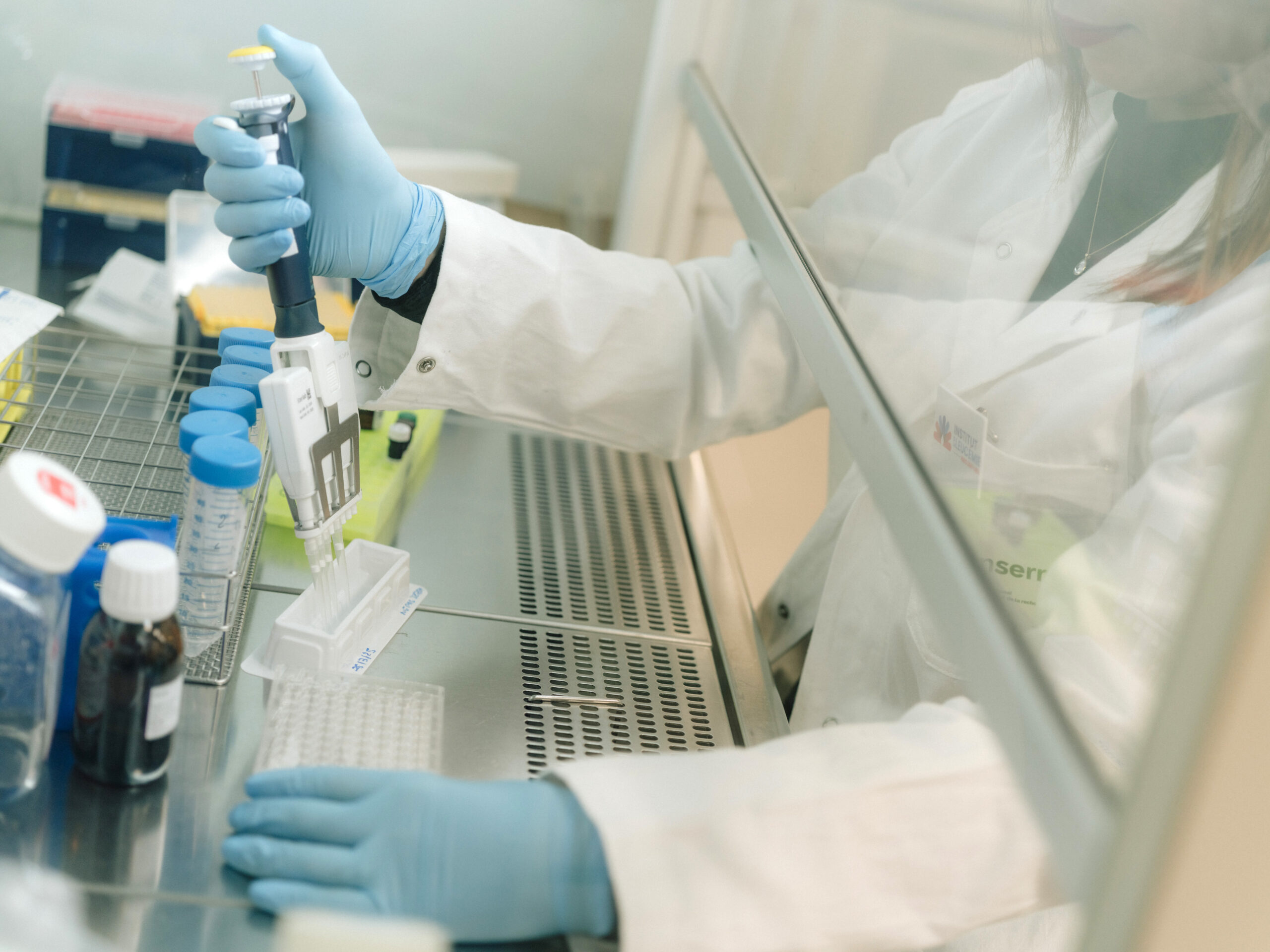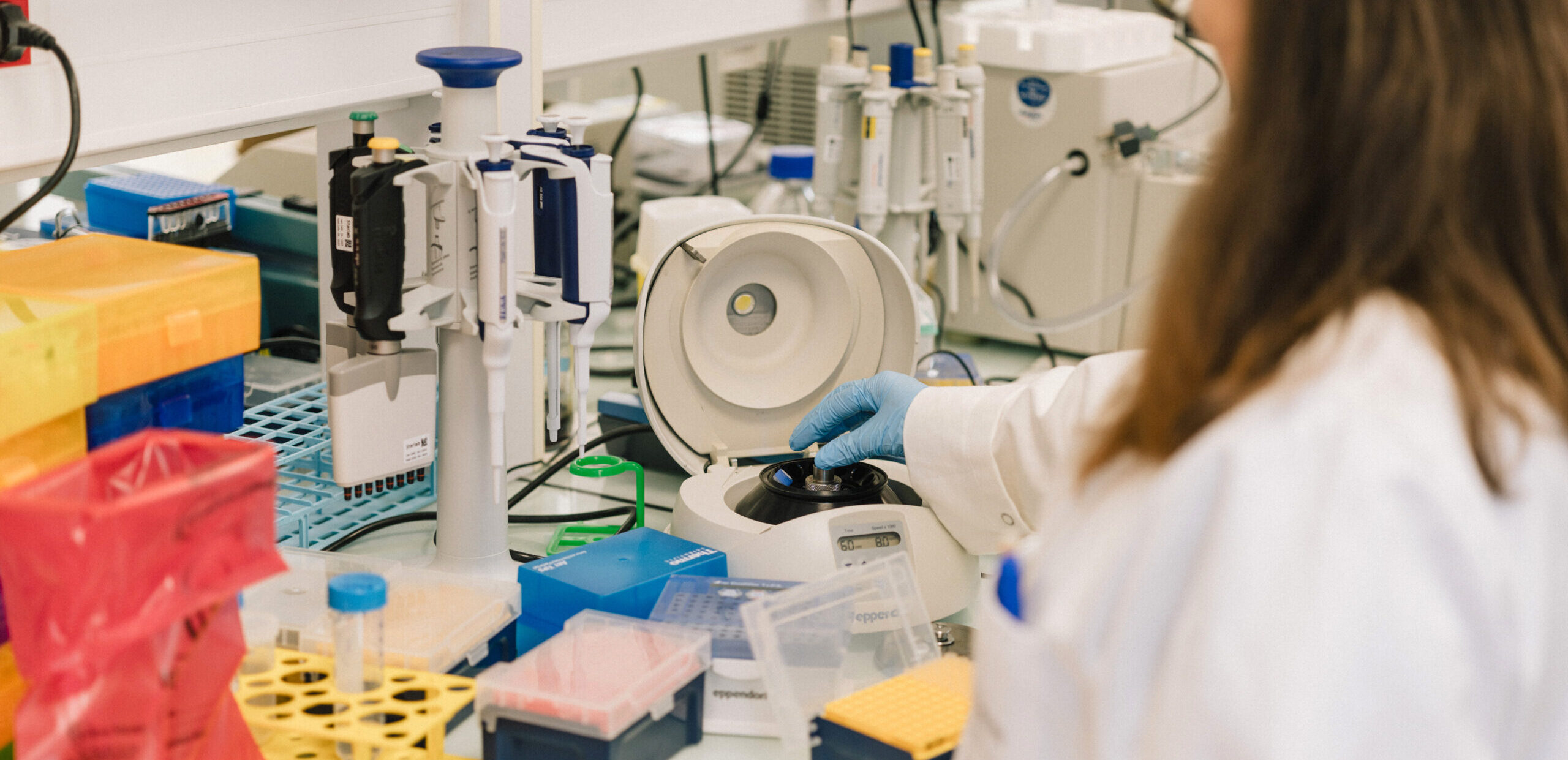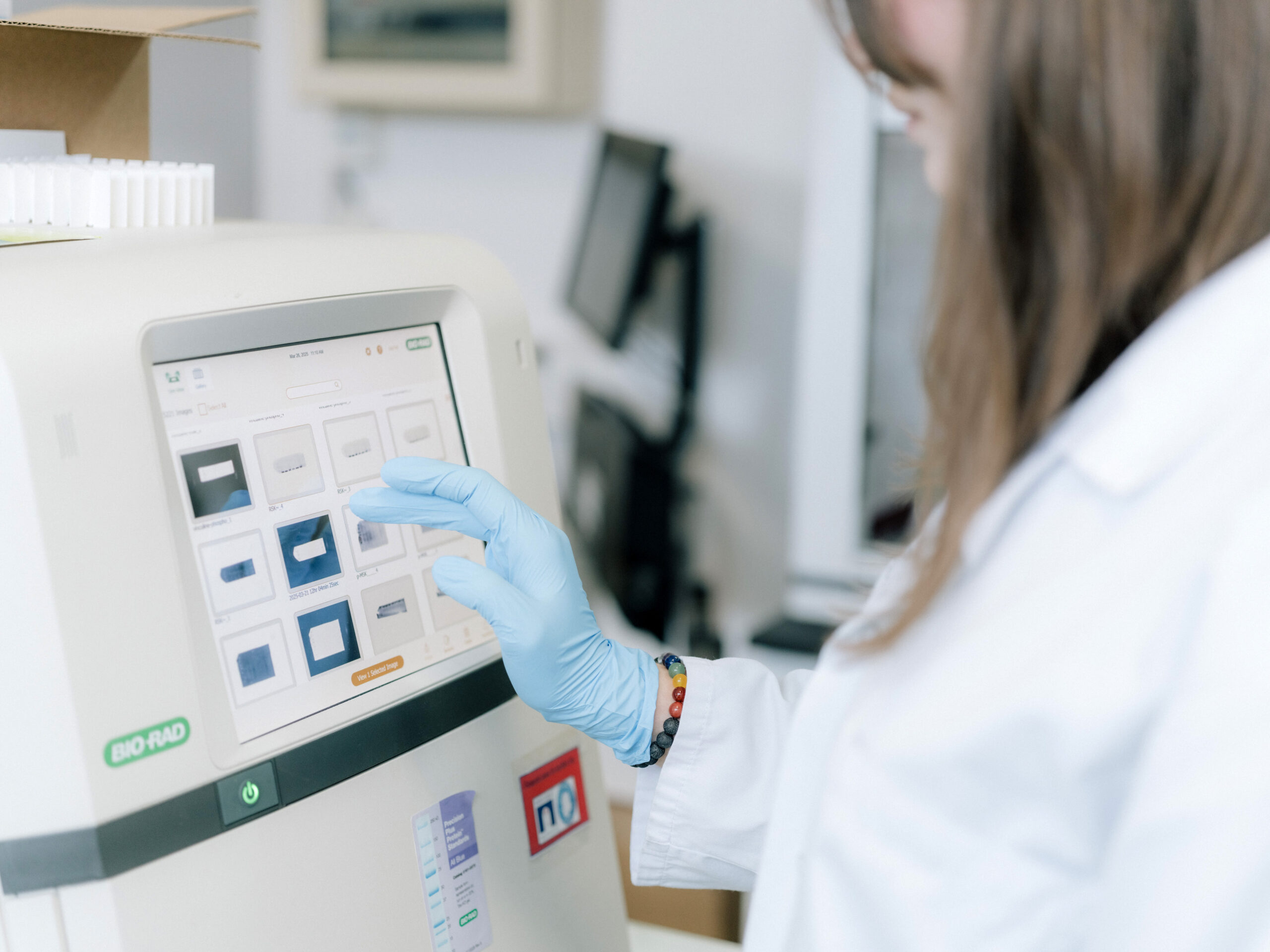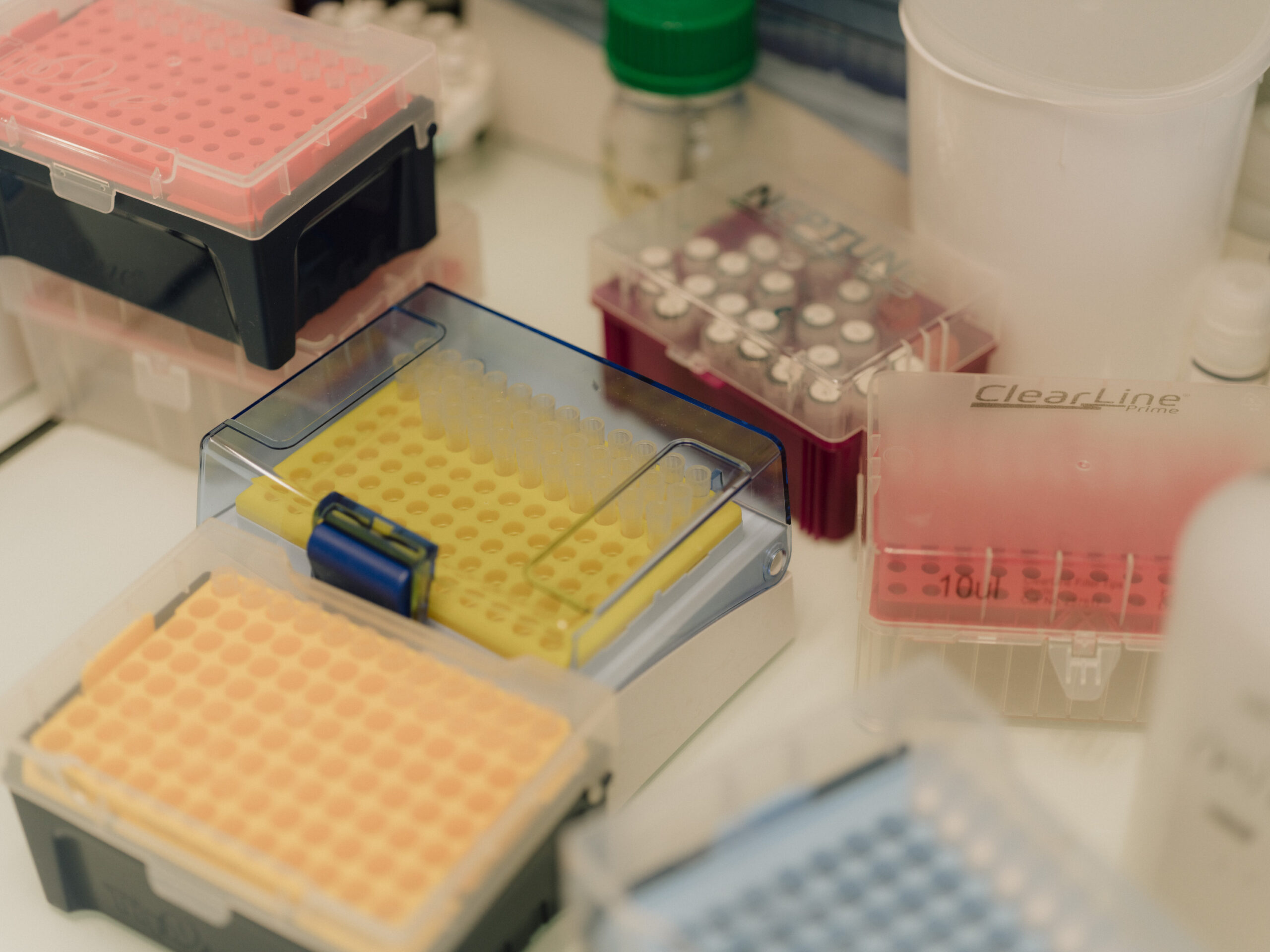- About us
- A new Institute dedicated to combating Leukemia
- Medical-scientific program
- History of Hematology on the Saint-Louis Campus
- Institute Governance
- Press Room
- Contact us
- Our news
- Profile of Valéria Bisio, Research Officer
- Establishment of a Hemato-Oncogenetics Unit
- Profile of Alice Gros, a peer-support patient
- Laureates of the first call for projects of the Leukemia Institute
- Profile of Julien Calvo, researcher
- Support us
- Join us
- You are
- Patients and relatives
- To be cared for and supported
- Become an expert patient
- Discover the Leukemia Institute
- Researchers
- Research
- Clinical trials
- Discover the Leukemia Institute
- Healthcare professionals
- Refer a patient
- Our clinical research
- Discover the Leukemia Institute
- Industry partners
- Discover the Leukemia Institute
- Translational research
- Donors
- Support us
- Discover the Leukemia Institute
- Care
- Patient care
- Being Treated at the Leukemia Institute
- Anti-cancer Treatments
- Supportive Care
- Open Multidisciplinary Meetings
- Our clinical services
- Department of clinical hematology
- Department of adult hematology
- Hematology Transplant Unit
- Department of Pharmacology and Clinical Investigations
- Department of clinical hematology and cell therapy
- Adolescent and Young Adult Unit
- Outpatient Hemato-oncogenetics Unit
- Department of senior hematology
- Department of pediatric hematology and immunology
- Our medical laboratories
- Hematology Medical Laboratory, Michaela Fontenay
- Hematology Medical Laboratory, Jean Soulier
- Molecular Genetics Unit, Hélène Cavé
- Hematology Medical Laboratory, Vahid Asnafi
- Patient Information
- Acute Myeloid Leukemias
- Acute Lymphoblastic Leukemias
- Myeloproliferative Neoplasms
- Myelodysplastic Syndrome
- Anti-cancer Treatments
- Supportive Care
- Psychological Support
- Research
- Our research teams
- Molecular pathology
- Functional precision medicine for leukemia
- Normal and pathological hematopoiesis
- Niche, Cancer, and Radiation in Hematopoiesis
- Population Evolution and Interaction Particle Systems
- Translational Immunology in Immunotherapy and Hematology (TIGITH)
- Identification and targeting of extrinsic regulators of myeloid malignancies
- Lymphoid niches, Chemokines and Immuno-hematological syndromes
- Molecular Mechanisms of Acute Myeloid Leukemia Development
- Chronic Myeloid Malignancies, Microenvironment & Translational Research
- Leukemia & Niche Dynamics
- Genetic and Epigenetic control of Normal and Malignant Hematopoiesis
- Stem cell dysfunction and secondary AML
- Biostatistics and clinical epidemiology
- Our technological platforms
- Our clinical research
Accueil Patient care Acute Lymphoblastic LeukemiasAcute Lymphoblastic Leukemias
...What is leukemia?
Definition
LeukemiaYour blood contains cancer cells. These are immature blood cells called “blasts.”
AcuteThe disease develops rapidly, and treatment must begin within days of the diagnosis.
LymphoblasticAn abnormality occurs in the differentiation of lymphoid cells in the bone marrow.
LeukemiaYour blood contains cancer cells. These are immature blood cells called “blasts.”
AcuteThe disease develops rapidly, and treatment must begin within days of the diagnosis.
LymphoblasticAn abnormality occurs in the differentiation of lymphoid cells in the bone marrow.
Types of Acute Lymphoblastic Leukemia
85%B-cell phenotype
15%T-cell phenotype
Understanding acute lymphoblastic leukemia
Its origin is often unknown, and it is not contagious.
The “blasts” accumulate in your bone marrow, which can no longer properly produce normal blood cells.Exposure to ionizing radiation or certain chemicals (such as benzene), as well as chemotherapy and radiotherapy used to treat other cancers.
Certain genetic disorders (Trisomy 21, Fanconi anemia, Li-Fraumeni syndrome, etc.) and pre-existing blood disorders (myeloproliferative syndromes).- Fatigue, paleness, palpitations, and shortness of breath: signs of anemia (low red blood cells)
- Fever and infections (especially lung infections): signs of leukopenia or neutropenia (low white blood cells)
- Bleeding (especially from mucous membranes) and bruising: signs of thrombocytopenia (low platelets)
These signs reflect bone marrow failure: the bone marrow is unable to produce enough red blood cells, white blood cells, and platelets.
Tumor syndrome: certain organs may swell due to the accumulation of lymphoblasts (spleen, lymph nodes, testicles…).
Sometimes: bone or joint pain and neurological symptoms may occur.
It is the most common cancer in children, with:
-
a peak incidence between ages 2 and 5
-
another peak after age 50.
About 15 people per 1 million are affected by ALL.
The diagnosis of ALL is based on:
A blood test (CBC) to measure the different blood cells and identify any abnormalities (such as low red blood cells, white blood cells, or platelets).
A bone marrow examination (bone marrow aspirate/biopsy) to identify abnormal cells, their chromosomes, and genes.
A cerebrospinal fluid (CSF) analysis to check for possible neurological involvement.
Research
The biology of T-cell ALL and B-cell ALL. Understanding the molecular mechanisms of tumor progression
For a subgroup of B-cell ALL patients with a gene rearrangement, monitoring the disease through this rearrangement is more reliable than traditional methods. This improves the assessment of patient outcomes.
Emmanuelle Clappier and her team
The fundamental mechanisms of T-cell ALL development: receptors, epigenetics, genomics, and more.
Some T-cell ALL (so-called PI3K pathway-altered) are highly dependent on glucose and, when glucose is scarce, use glutamine instead. Using inhibitors to block these pathways offers a promising and innovative therapeutic approach.
Vahid Asnafi and Elizabeth Macintyre and their team
The dynamic interactions between T-ALL leukemia cells and their microenvironment, particularly the vascular components.
A microfluidic “on-chip” vascular network and a bio-fabricated human bone marrow and brain system in a preclinical model to study the vascular system’s response to leukemia-induced specific stimuli.
Diana Passaro and her team
The interaction of T-ALL and B-ALL leukemia cells with the various components of the bone marrow.
Identification of a population of dormant leukemia cells that are resistant to chemotherapy, providing new prognostic and therapeutic insights. Development of a humanized bone model, which will allow the study of intercellular interactions that induce chemoresistance in leukemia cells.
Françoise Pflumio and her team
Follow our actions by subscribing to the institute's newsletter
- Discover the Leukemia Institute
- Translational research
- Our clinical research
- Clinical trials
- Become an expert patient
- To be cared for and supported
- A new Institute dedicated to combating Leukemia











Treatment of Acute Lymphoblastic Leukemia
The treatment aims to eliminate the “blasts”, allowing the normal bone marrow to rebuild healthy blood cell populations (red blood cells, white blood cells, and platelets).
Your doctor may suggest participating in a clinical trial to gain access to an innovative drug and/or contribute to improving medical practices.
Treatment is carried out in several phases.
1 week
Corticosteroid therapy: taking corticosteroids, which are anti-inflammatory medications
Lumbar puncture: to analyze cerebrospinal fluid (CSF) and administer chemotherapy
Pre-chemotherapy assessments: evaluation of various organs through blood tests, echocardiography, possible CT scan, fertility preservation, and placement of a central venous catheter
These steps help determine the characteristics of the disease necessary to start an appropriate treatment.
5–6 weeks of hospitalization (to minimize the risk of infection)
Corticosteroid therapy: taking corticosteroids, which are anti-inflammatory medications
Intravenous combination chemotherapy: several chemotherapy drugs given together (vincristine, anthracyclines, cyclophosphamide, asparaginase)
Lumbar puncture
To eliminate blasts present in the bone marrow and blood.
This phase causes aplasia (a drop in blood cell counts), temporarily lowering the immune defenses. Antibiotics or platelet and red blood cell transfusions may be required.
A bone marrow examination is performed at the end to check whether the blasts have been eliminated. If successful, this is called complete remission.
Treatment is adapted for patients over 65 years old (adjusted chemotherapy doses), B-cell ALL (addition of immunotherapy), patients with the Philadelphia chromosome (targeted therapy added in all phases).
Several months, with hospital stays of 3–7 days interspersed with time at home.
High-dose consolidation chemotherapy given in cycles
Immunotherapy (Blinatumomab) to help the patient’s immune system destroy residual leukemia cells
Lumbar punctures
To eliminate residual disease and reduce the risk of relapse.
Between consolidation cycles, a delayed intensification phase is performed.
Corticosteroid therapy (anti-inflammatory medications) and intravenous combination chemotherapy (same as in the induction phase) are used.
Usually performed on an outpatient basis, but hospitalization is often required to monitor for infection risk in case of severe white blood cell reduction (aplasia).
Cranial radiotherapy (use of high-energy beams to destroy cancer cells) concludes the intensive treatment phase.
For patients at high risk of relapse, a stem cell transplant may be performed to replace diseased bone marrow with healthy marrow from a compatible donor (often a family member). For patients with the Philadelphia chromosome, consolidation consists of alternating high-dose chemotherapy and Blinatumomab combined with targeted therapy. The targeted therapy continues during the maintenance phase, which also includes re-induction cycles.
2 years, on an outpatient basis
Two oral chemotherapy treatments
Monthly intravenous chemotherapy and corticosteroids → only during the first year
In some cases, you may be invited to participate in a clinical research trial. You will be required to sign a written consent form and will have the right to withdraw from the trial at any time without providing a reason.